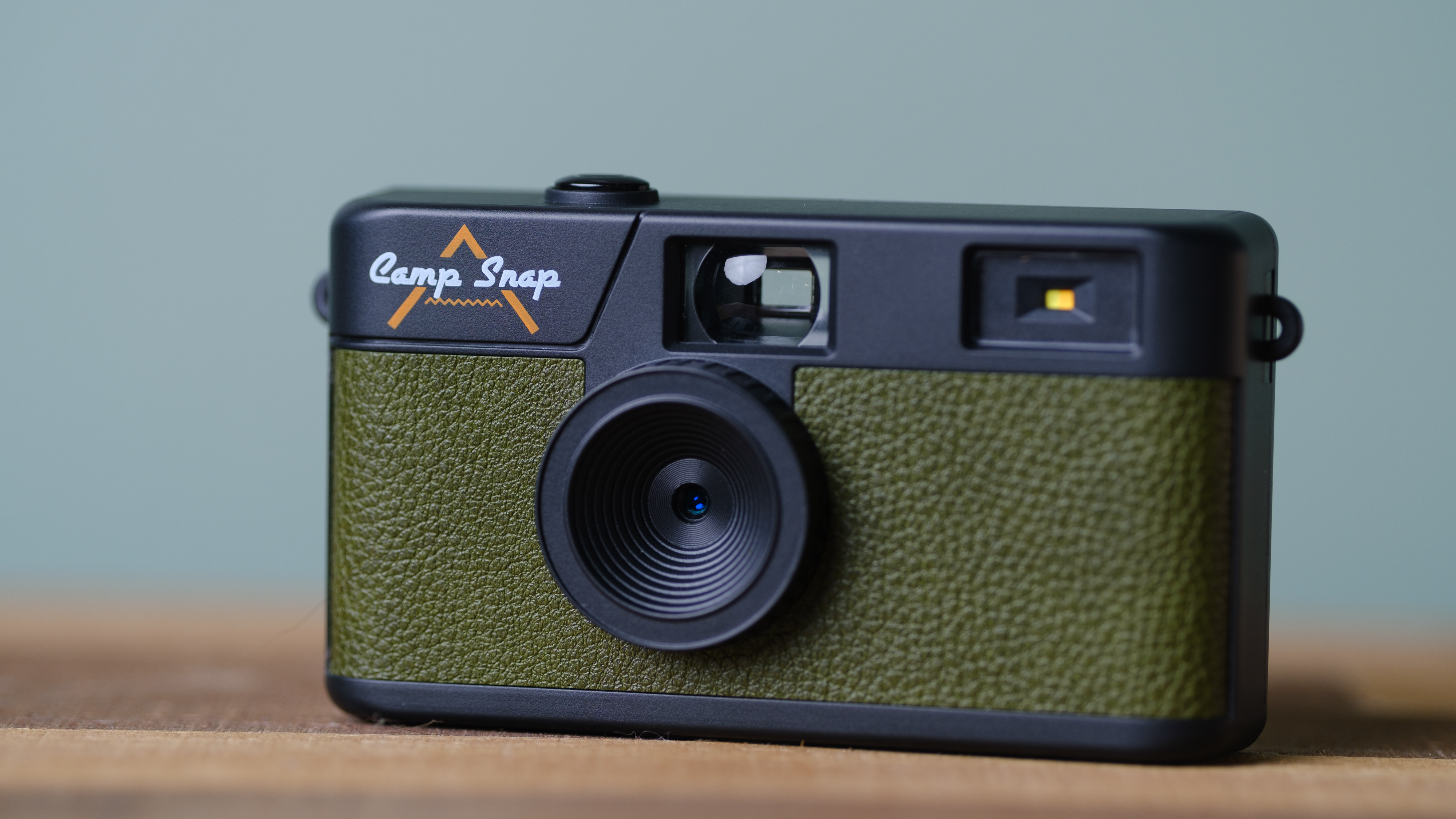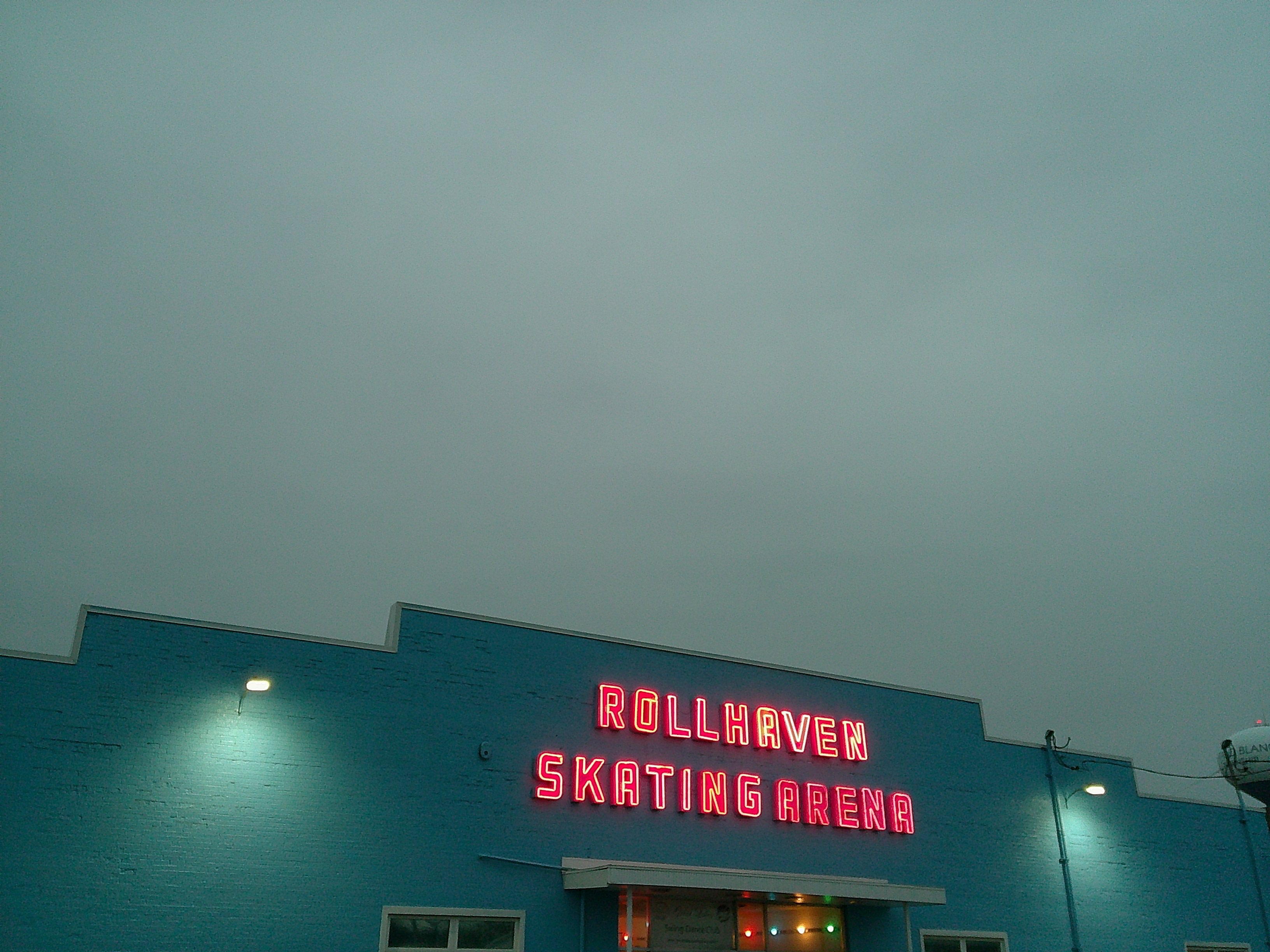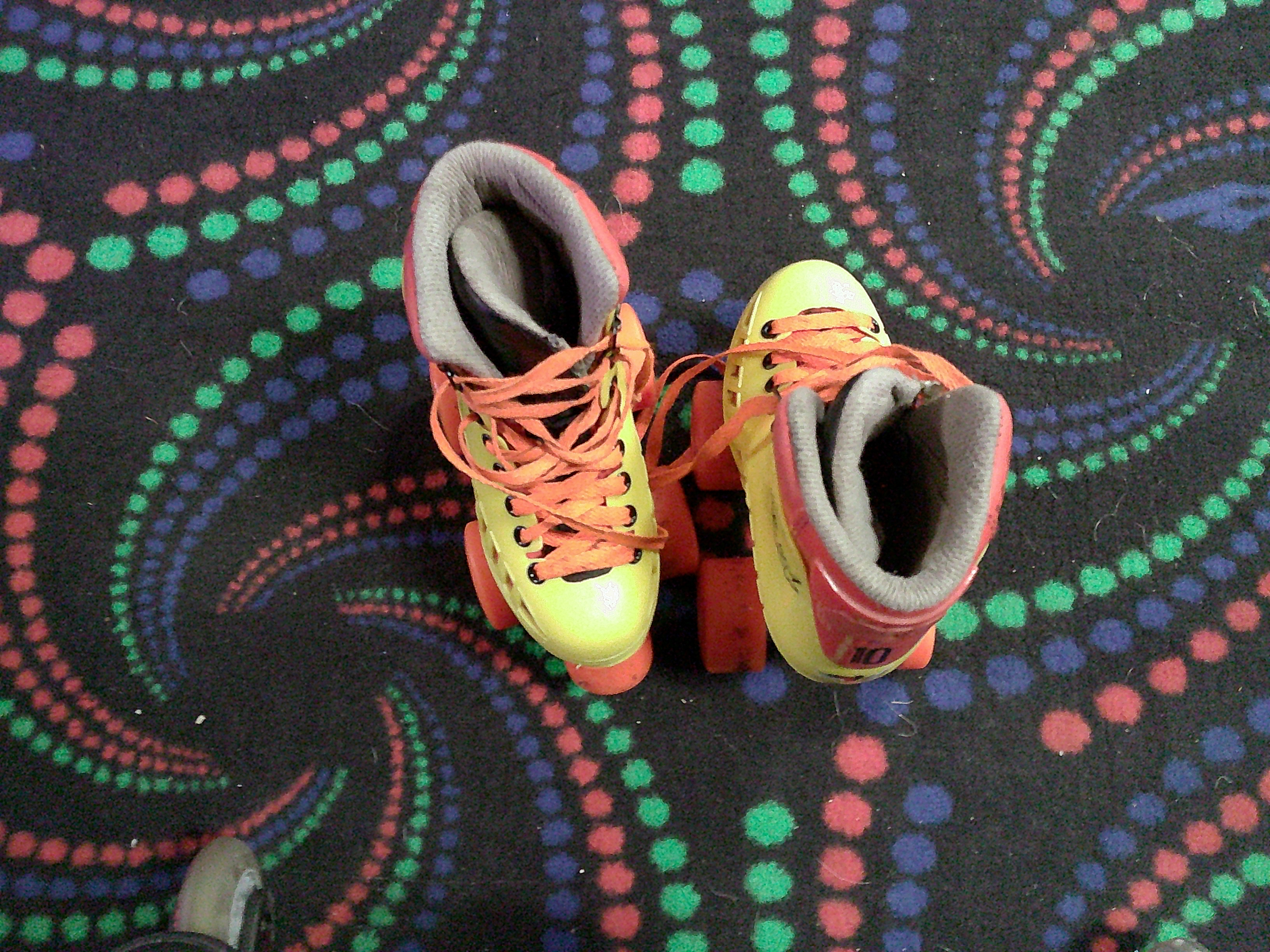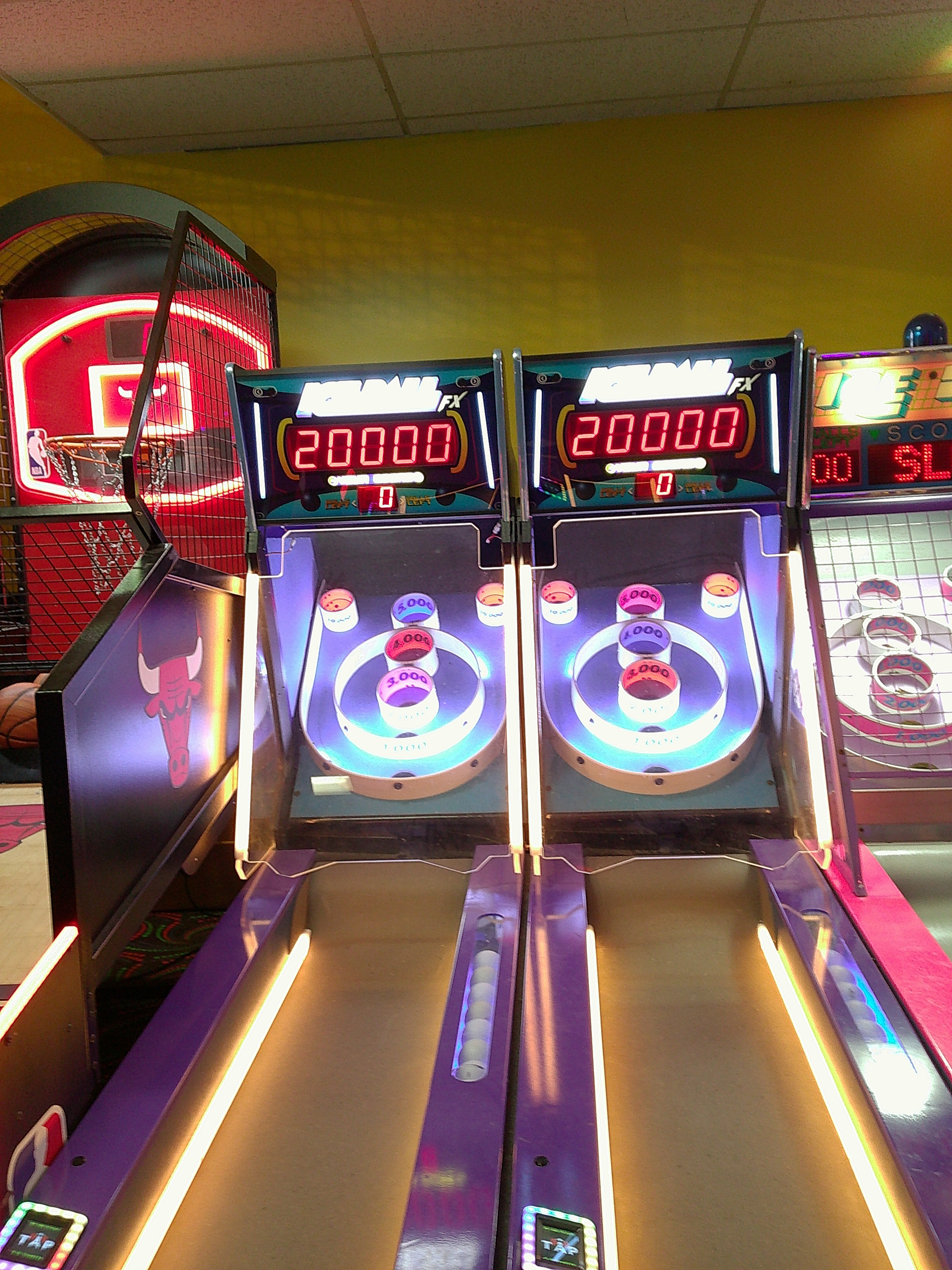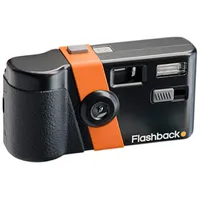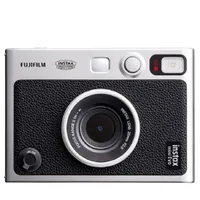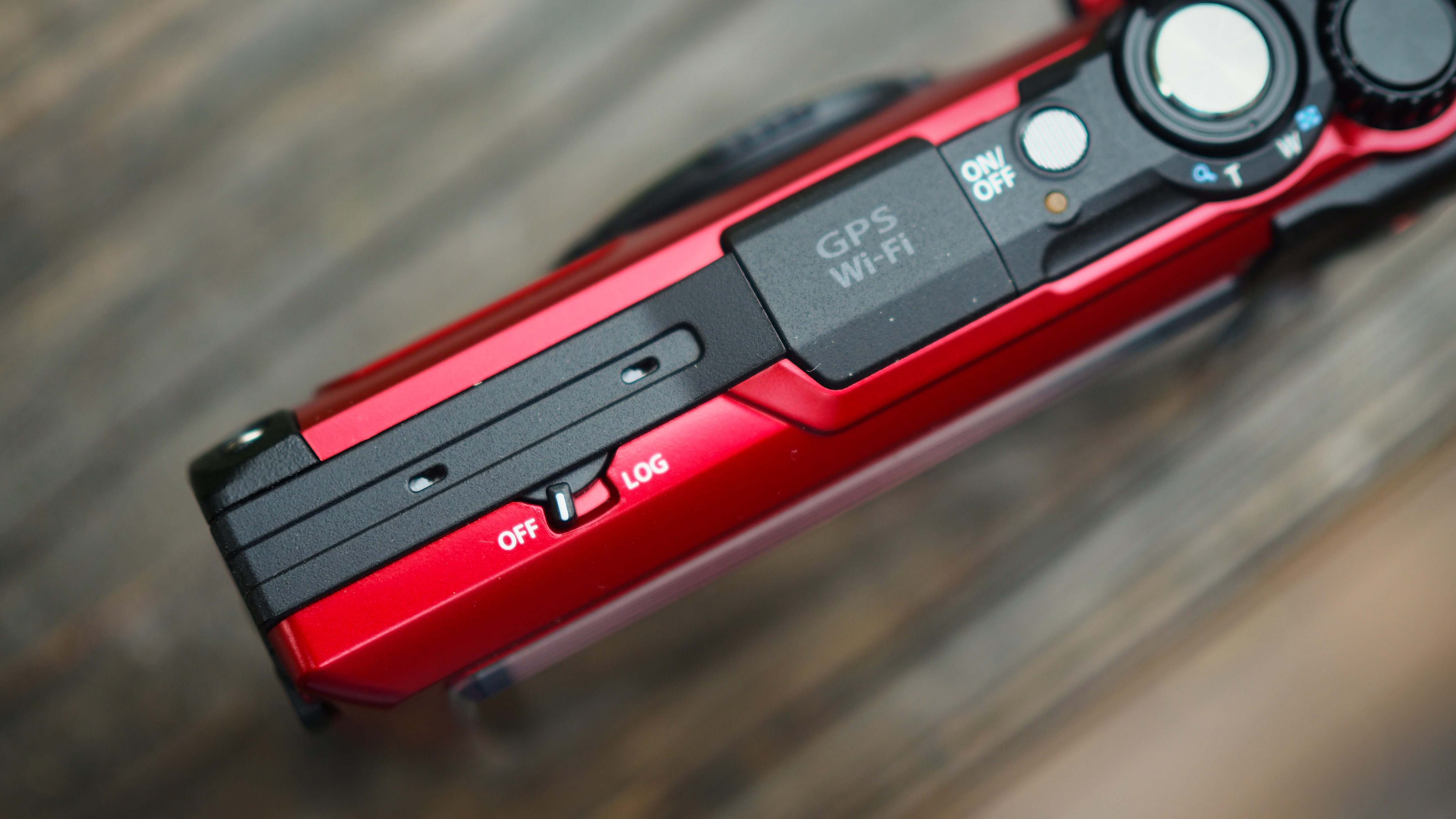Digital Camera World Verdict
The Camp Snap is a mish-mash between a disposable film camera and a modern digital camera, resulting in an all-digital but screen-free compact camera. The camera is full of retro charm many will love, but some may be disappointed by the shutter lag and viewfinder.
Pros
- +
Screen-free design
- +
Compact
- +
Retro charm
- +
Easy to use
- +
Affordable
Cons
- -
Noticeable shutter lag
- -
Viewfinder is inaccurate
- -
Easy to blur images
Why you can trust Digital Camera World
If a camera designer Frankensteined a disposable film camera and a compact digital camera together, I imagine the result would look something like the Camp Snap. The camera looks and feels like a classic disposable film camera – except it's all digital on the inside. The camera is designed for a screen-free photography experience, without the cost or environmental impact of disposable film cameras.
While the Camp Snap initially launched as a camera for kids, the camera has more widespread appeal for anyone looking for a screen-free, cheap compact camera. It allowed me to hop on the retro compact trend without buying a used digicam from 20 years ago. The images are charmingly imperfect, the camera itself compact, and the price excellent.
Part of the Camp Snap’s charm is the screen-free design. Sure, it may be a little annoying to need a computer and a cord to actually see the images you just took. But, when it’s physically impossible to check that photo immediately after taking it, I find myself spending less time looking at the memories and more time actually making them.
I spent a few weeks snapping photos with the Camp Snap camera (version 103B) – and, of course, handing the camera over to my kids for usability and durability testing. Most of the camera's quirks just add to the imperfect retro charm of what is a great cheap camera. But a few others quirks, like a noticeable shutter lag and hit-or-miss automatic flash mode, may leave happier sticking with modern cameras.
Camp Snap: Specifications
| Title | Spec |
| Dimensions | 4.5” x 2.5” x 1” |
| Sensor | 8MP 1/3.2” |
| Lens | f/1.8 4.8mm (36.5 in 35mm equivalent) |
| Flash | Built-in with on/off/auto switch |
| Memory | Pre-installed 4GB card for up to 2,000 photos |
| Battery | Li-ion rechargeable battery rated at up to 500 shots per charge |
| Port | USB-C |
Camp Snap: Price
The Camp Snap camera sells for $65 / £53 / AU$106, or $75 / £61 / AU$123 for limited edition colors. The camera is available directly from the Cap Snap website, or Urban Outfitters.
The company also sells a waterproof case for the camera, as well as a storage case.
Camp Snap: Design & Handling
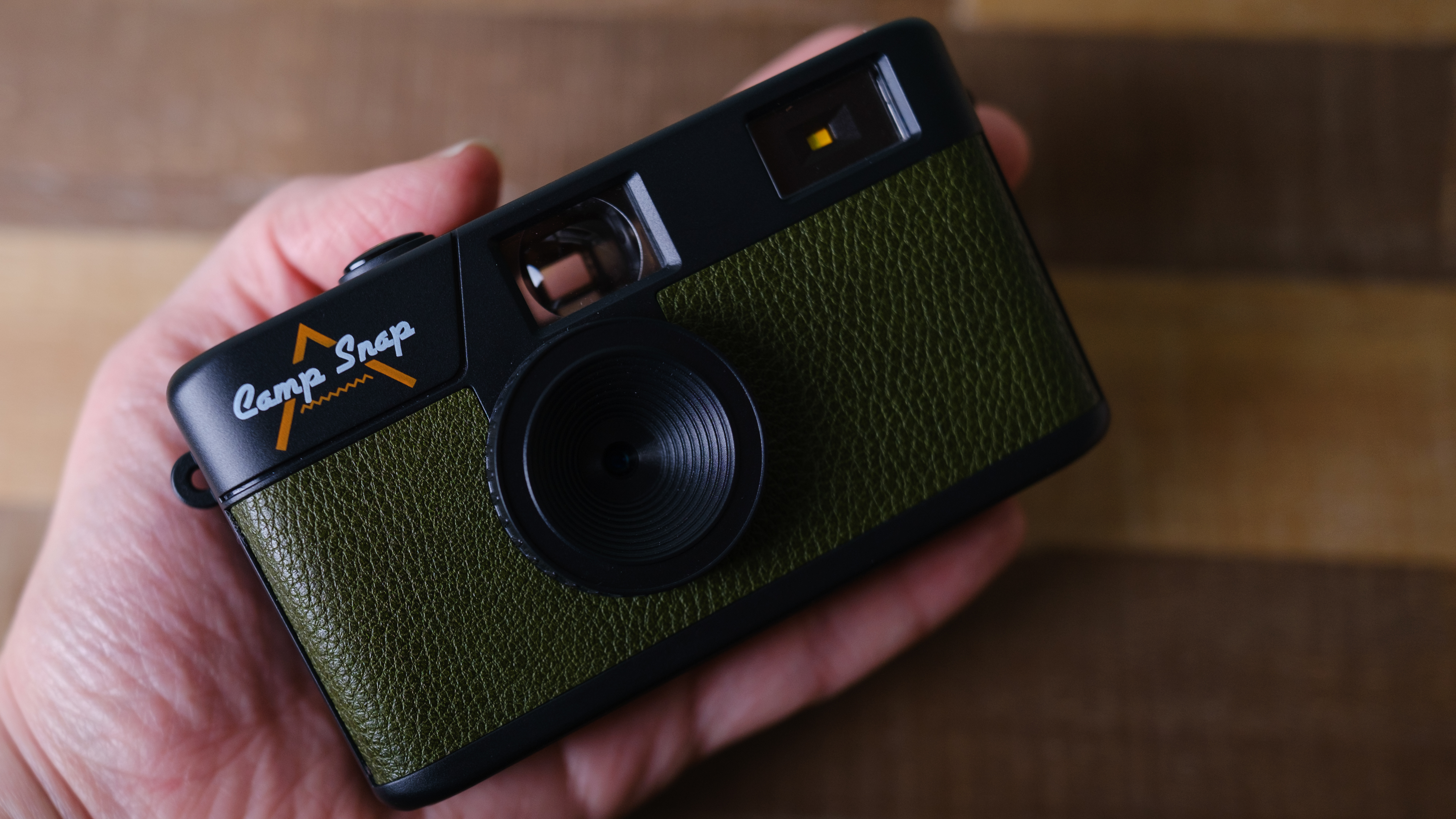
While the Camp Snap is a digital camera, it looks and feels more like a disposable film camera. For starters, there’s no screen and only a tiny optical viewfinder. But it also has the compact design and plasticky build of a disposable film camera.
The best camera deals, reviews, product advice, and unmissable photography news, direct to your inbox!
While the Camp Snap may be a bit on the plasticky side, it has a surprisingly nice textured wrap around the camera. That, and the variety of different colors, gives the camera a bit of retro charm even though it’s technically a new and modern device.
The camera also has the simplicity of a disposable film camera. The only control is the shutter release at the top (which you also press and hold to turn the camera on or off) and a switch to select from the different flash modes. A small LCD counter below the viewfinder at the back lists how many photos are on the camera.
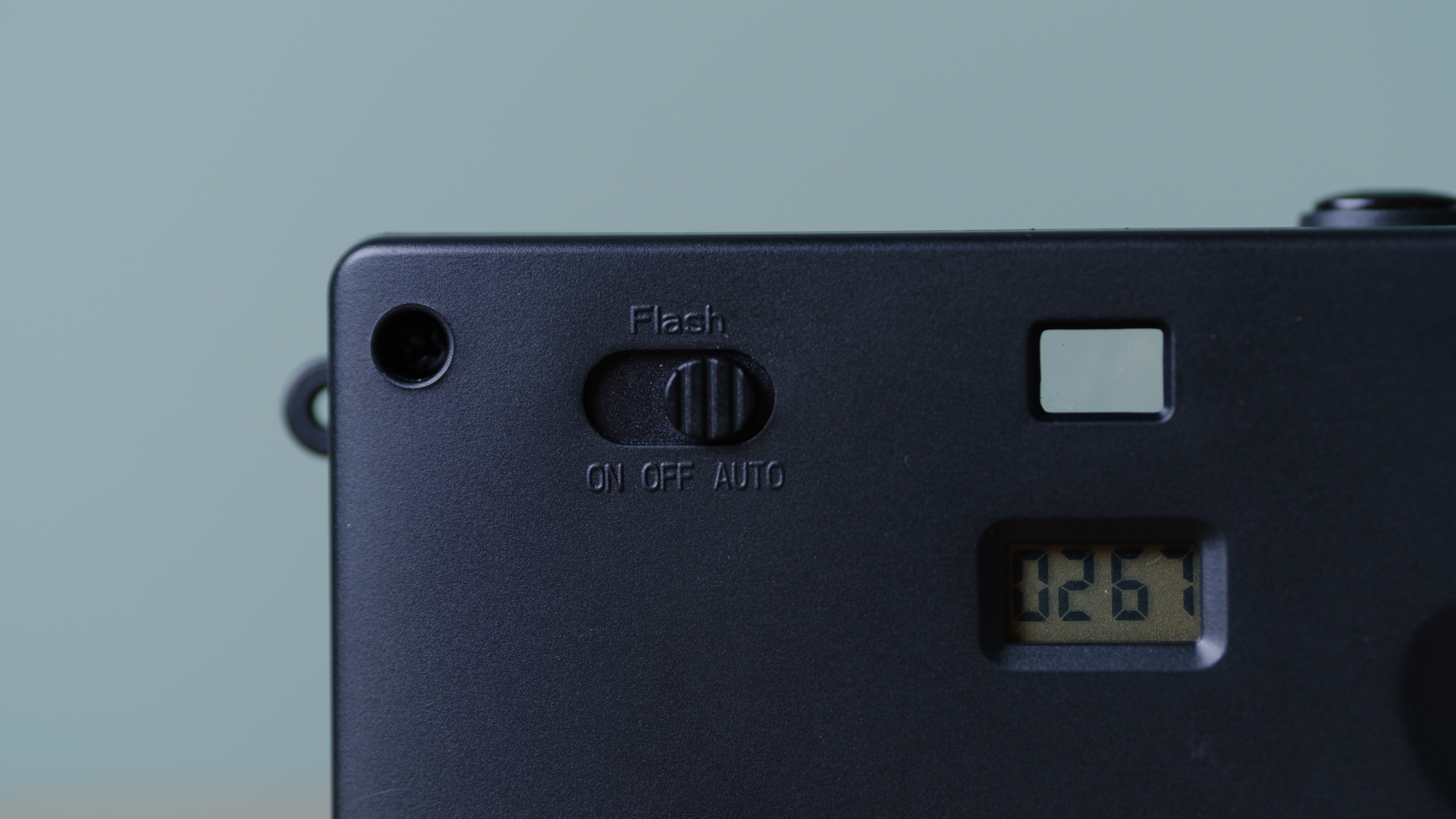
My biggest complaint with the design is that the Camp Snap doesn’t come with any sort of camera strap. The tiny size of the loop to attach a strap also seems small enough that some third-party straps may not actually fit through.
The company says that the Camp Snap can withstand some drops. That’s because the camera doesn’t have moving parts on the inside. A big drop will probably mar that plastic body, but it's not going to jolt any parts out of place. It’s not weather-sealed, however, so you’ll want to splurge on the extra waterproof case if the camera will be going anywhere near water or sand.
To test the camera’s durability, I handed the camera over to my active 5-year-old, who seems to have invented his own unique form of dance-tography that doesn’t require holding still. The Camp Snap survived the experience unscathed and still looks just like new.
While the camera was able to survive the sticky hands of someone who has only been around for half a decade, my nine-year-old daughter was better suited for the camera. My constantly-moving son created a lot of blurred photos that could, I suppose, be interpreted as impressionist photographs. But kids old enough to understand that you should hold still while taking a photo will get better snapshots.
It speaks volumes, however, that even a five-year-old didn’t need instructions to use the camera. You really just point and shoot. The only thing that may take some discretion is whether or not to use the flash, since the camera does have the ability to turn the flash off. You can leave the flash on automatic mode for kids too young to know whether or not to use it. But you can switch the flash off or force fire the flash as well. There were a few times I thought the flash should have gone off and it didn’t so the variety of flash settings are great to have.
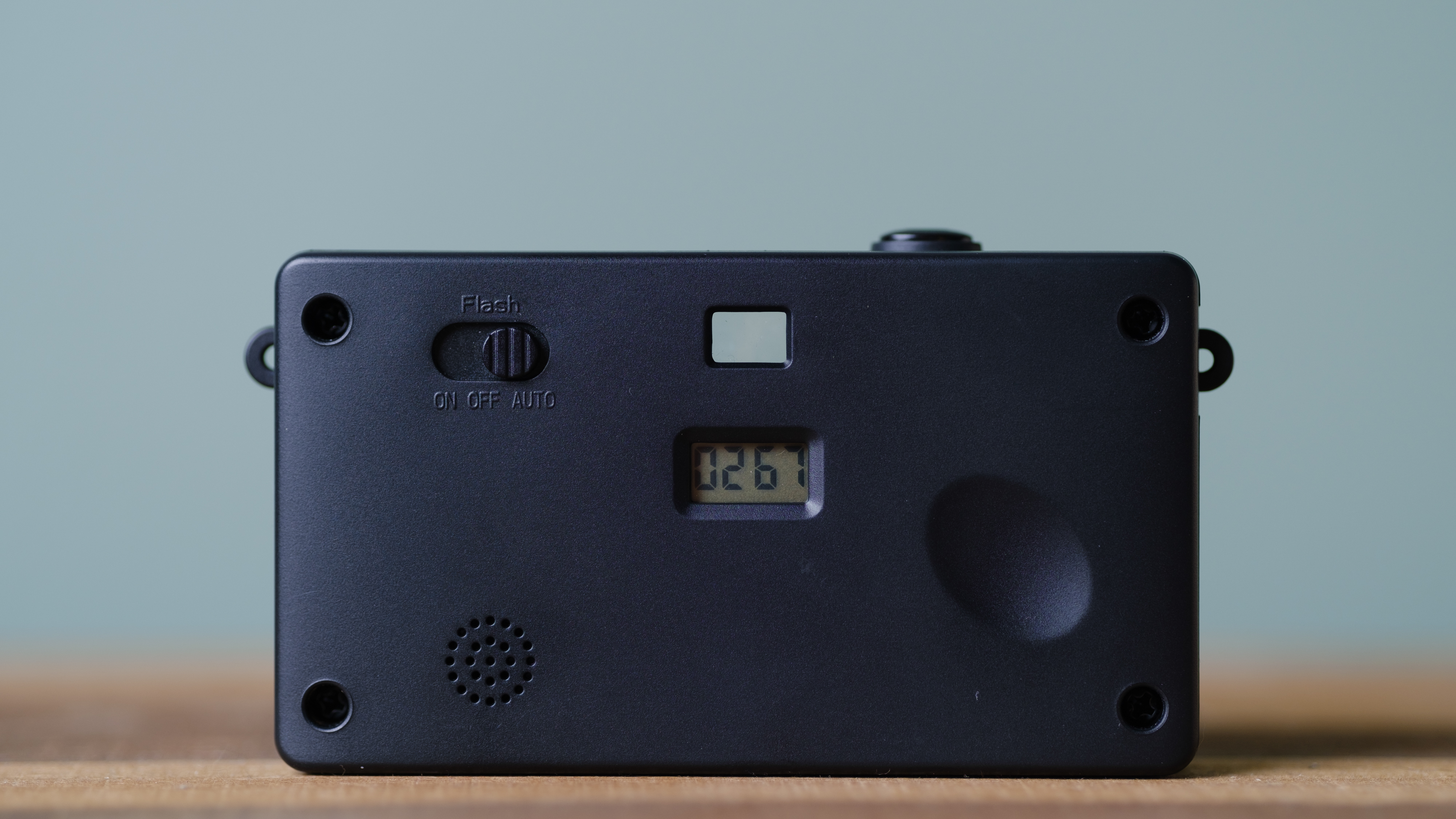
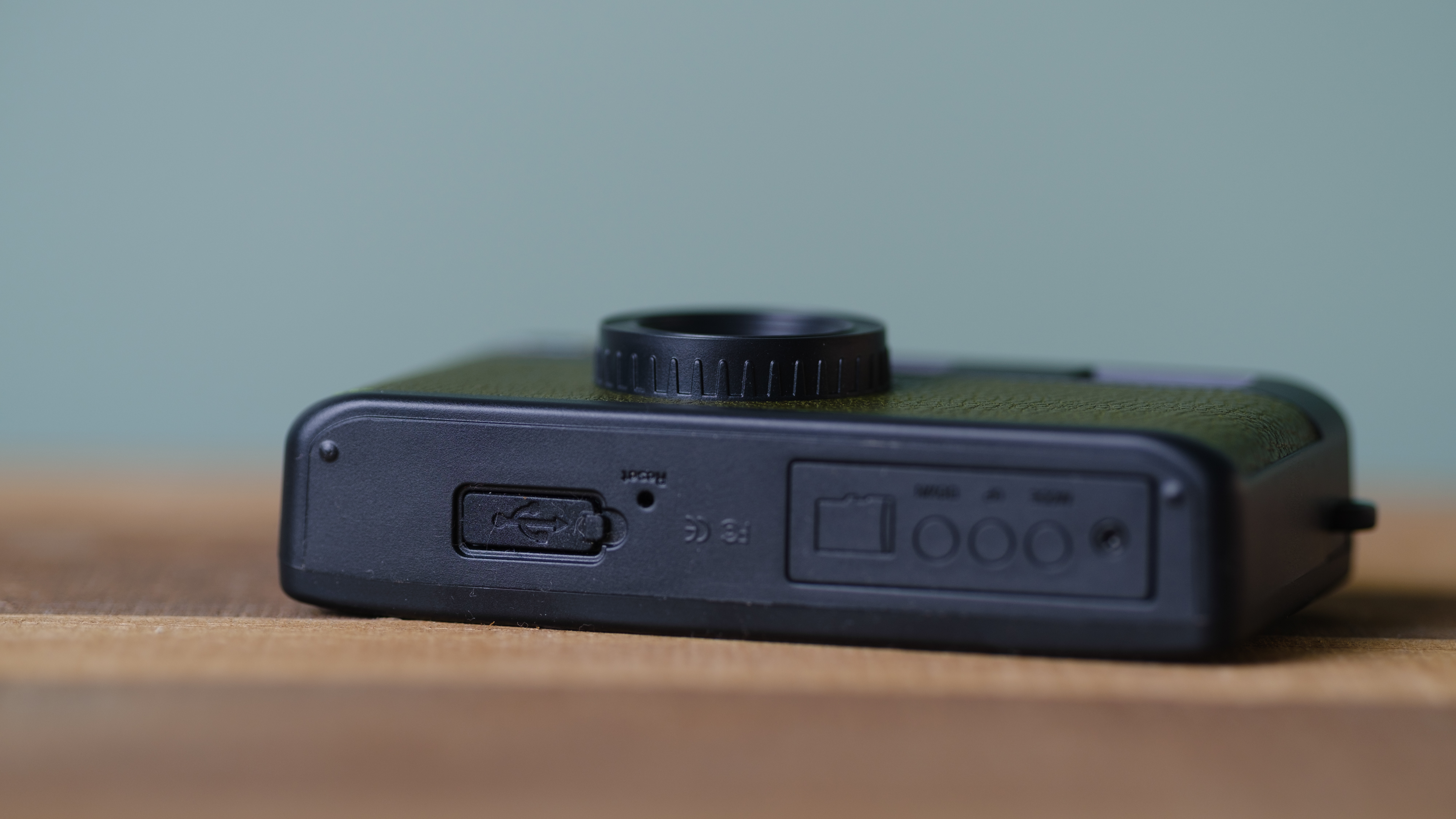
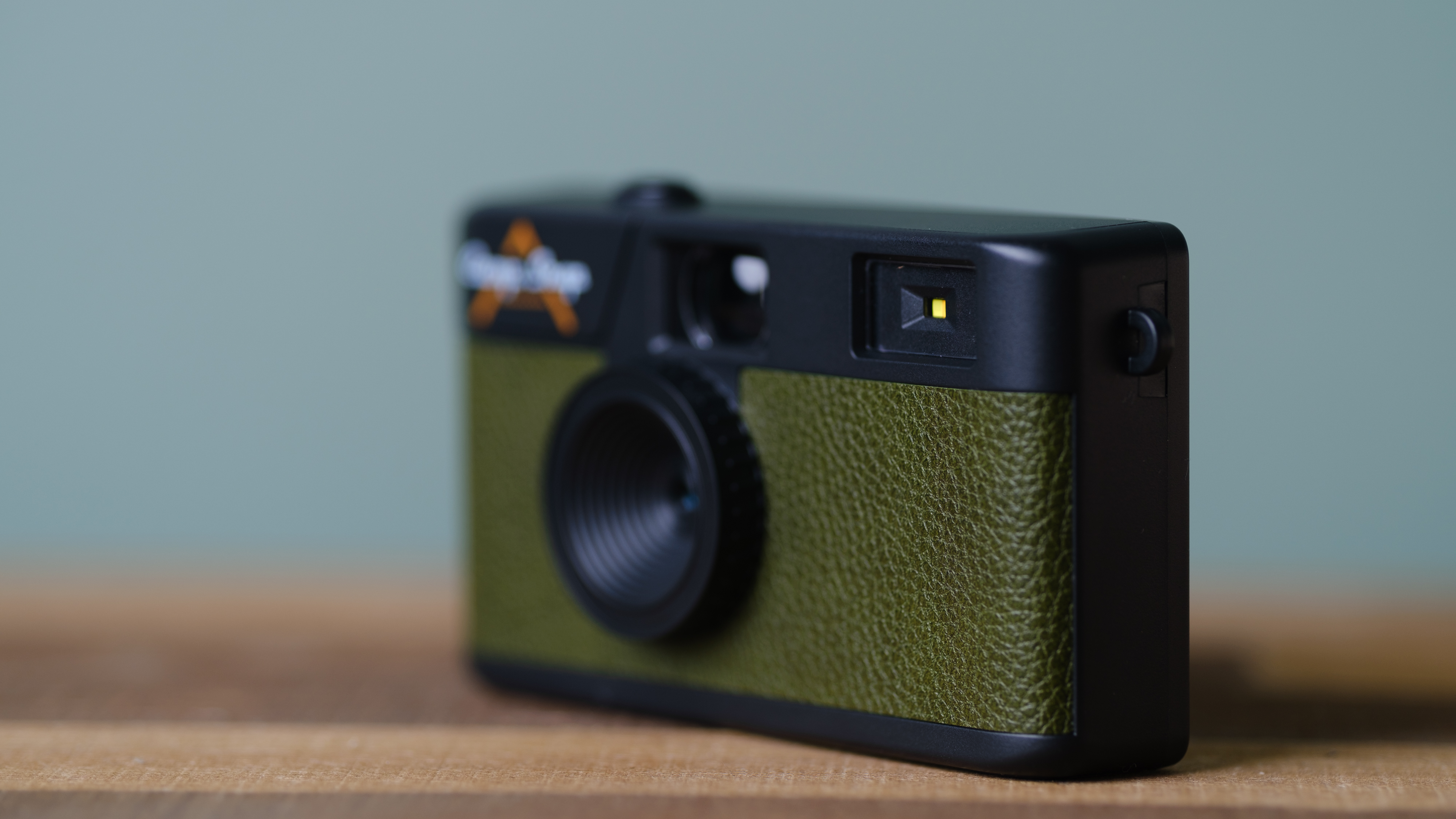
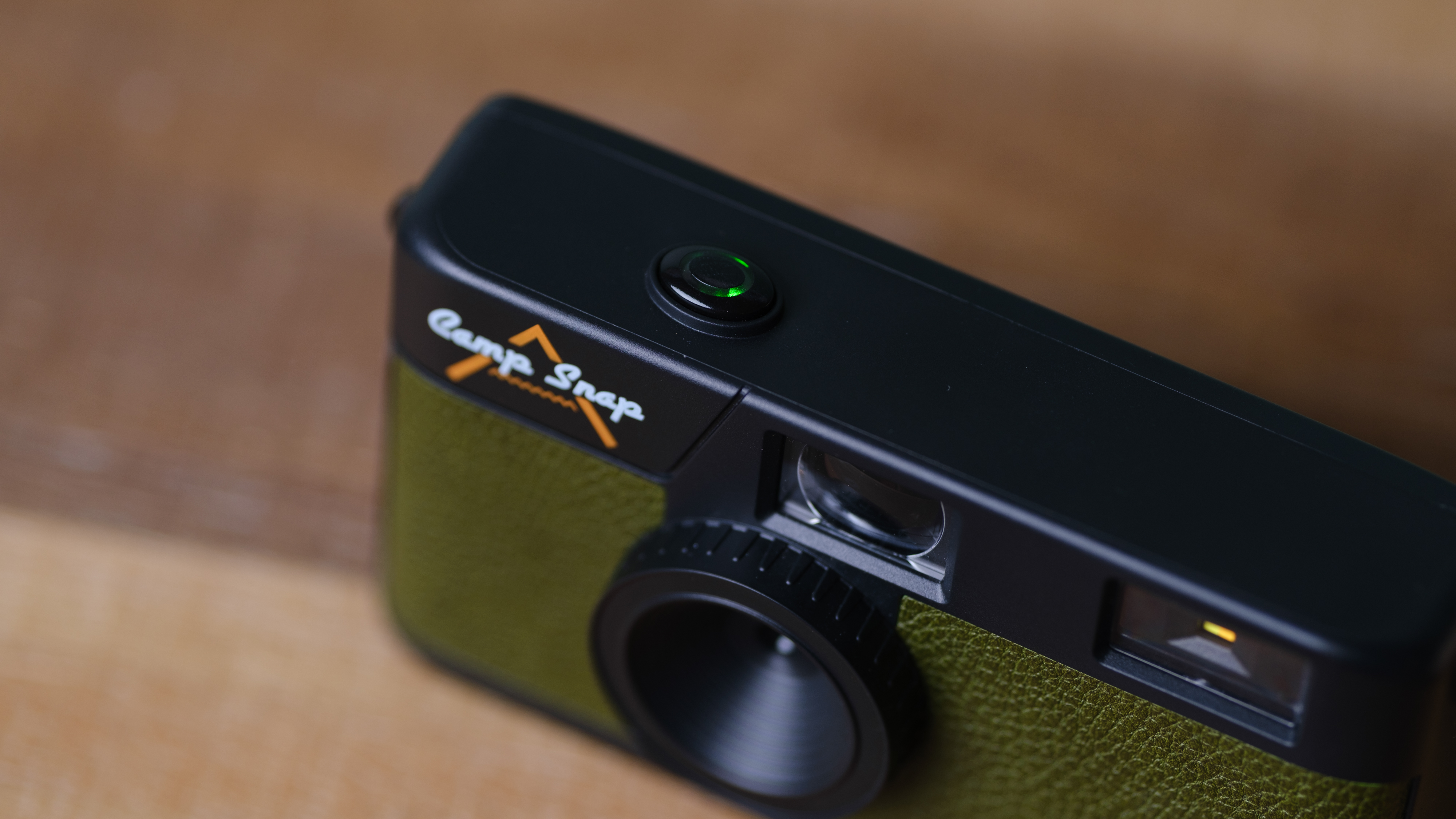
While kids will have no problem actually using the camera, loading photos takes slightly more tech savvy skills. The camera comes with a built-in card, which is actually under a door sealed shut with a screw, so the easiest way to look at the images is to pop the included cord in the camera and the other end in the USB-C port of your laptop or phone.
Without a screen, you’ll need even more tech savvy to adjust the Camp Snap’s color profile. The camera shoots with a retro look straight out of the box. You can change it to another color profile, like black and white, but you’ll need to plug the camera in, follow the instructions for a firmware update, then drag over the file for whatever color profile you want, and restart the camera. You can even use the company’s website to build your own custom profile.
The built-in battery is rated for up to 500 shots per charge, another perk of the screen-free design. The lack of a screen means there’s no battery life indicator, however, so there isn’t really a warning when the battery is beginning to get low. I didn’t need to recharge it during my shoots with it, though of course it does recharge a bit every time I plug it into the computer to retrieve the images.
Camp Snap: Performance
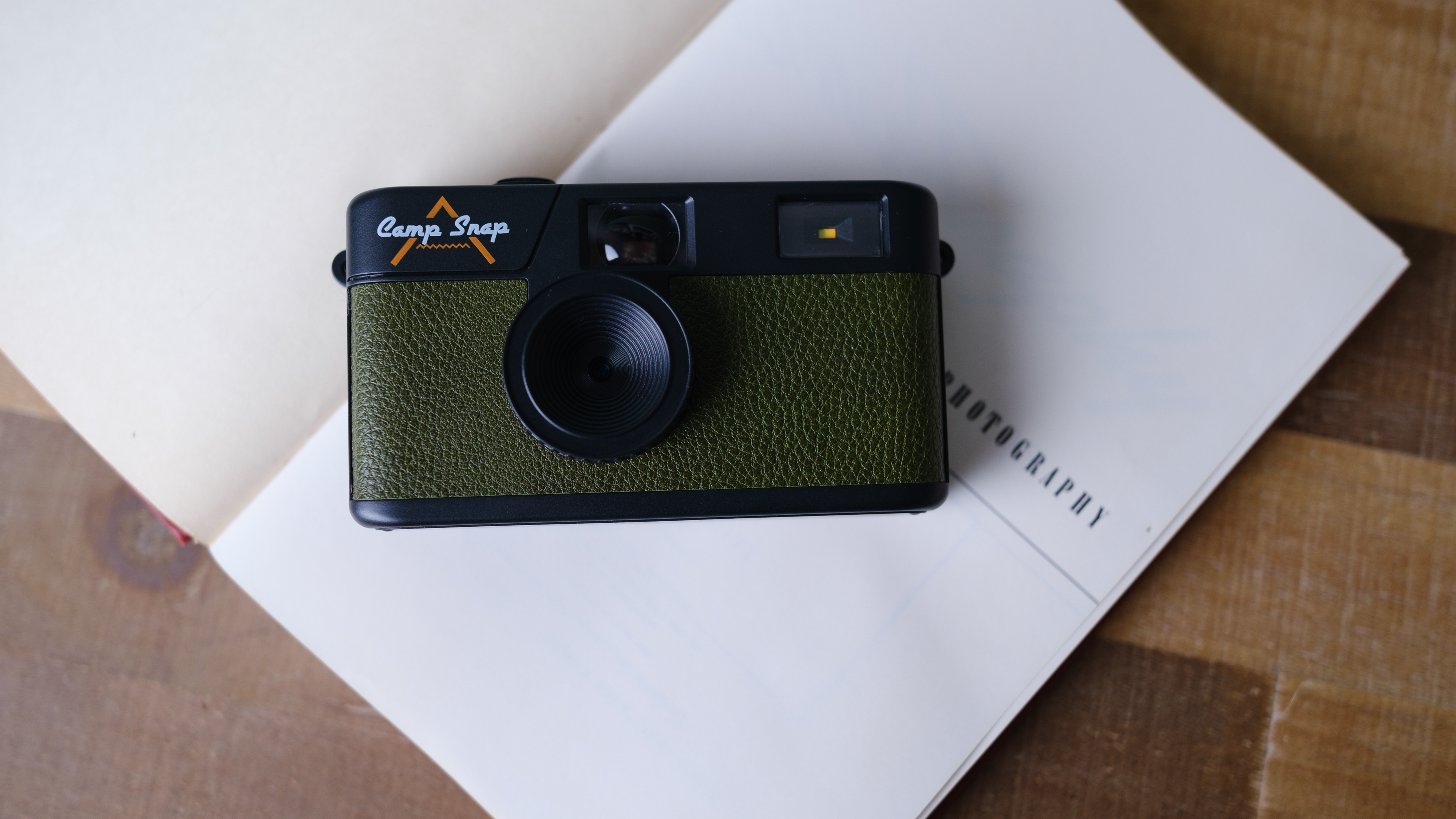
The performance of the Camp Snap camera follows on the same theme of its disposable film camera looks – which is to say that the performance has some of the same limitations as a compact film camera. That means you get photos that have some retro charm, but there are also some quirks, like a noticeable shutter lag.
While you can upload a custom color profile, you can only use one at a time. This feels a bit like a film camera in that you can’t switch from color to black and white in the middle of a roll. If you want to switch to black and white, you’ll need to plug the camera into a computer.
My biggest disappointment with the Camp Snap camera is that there’s a small delay between when you press the shutter release and when the image is taken. The delay is long enough that, if you’re taking a photo of a person or multiple people, they may start to move or look away a little too early. I have more than a few photos that I swear everyone was looking at me but instead half the people in the photo are looking away.
The shutter lag will also impact photos of action – you’ll have to anticipate a little more to time it right. While the shutter lag is disappointing, it fits with the disposable film camera look, as those cameras weren’t exactly known for being fast either.
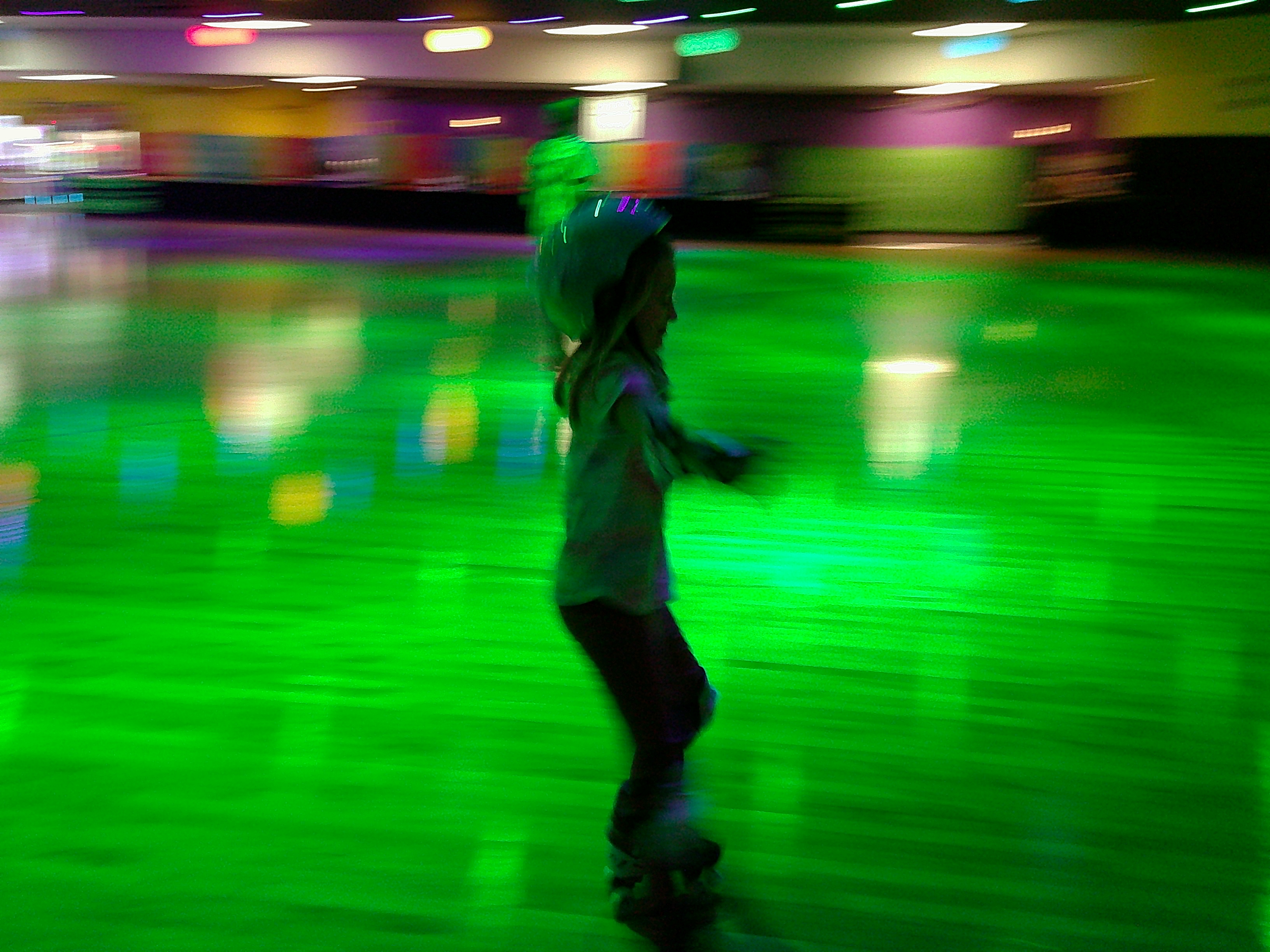
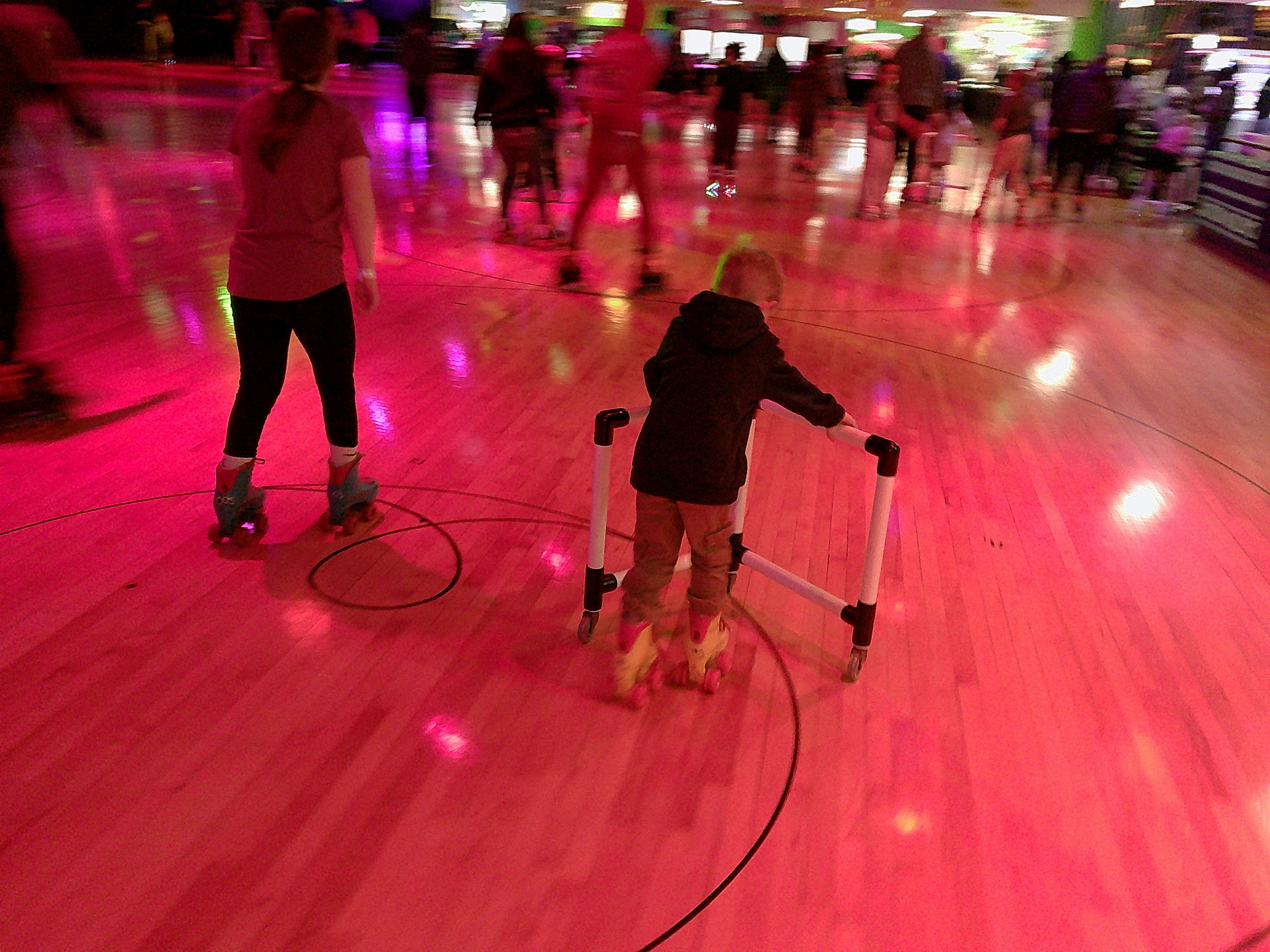
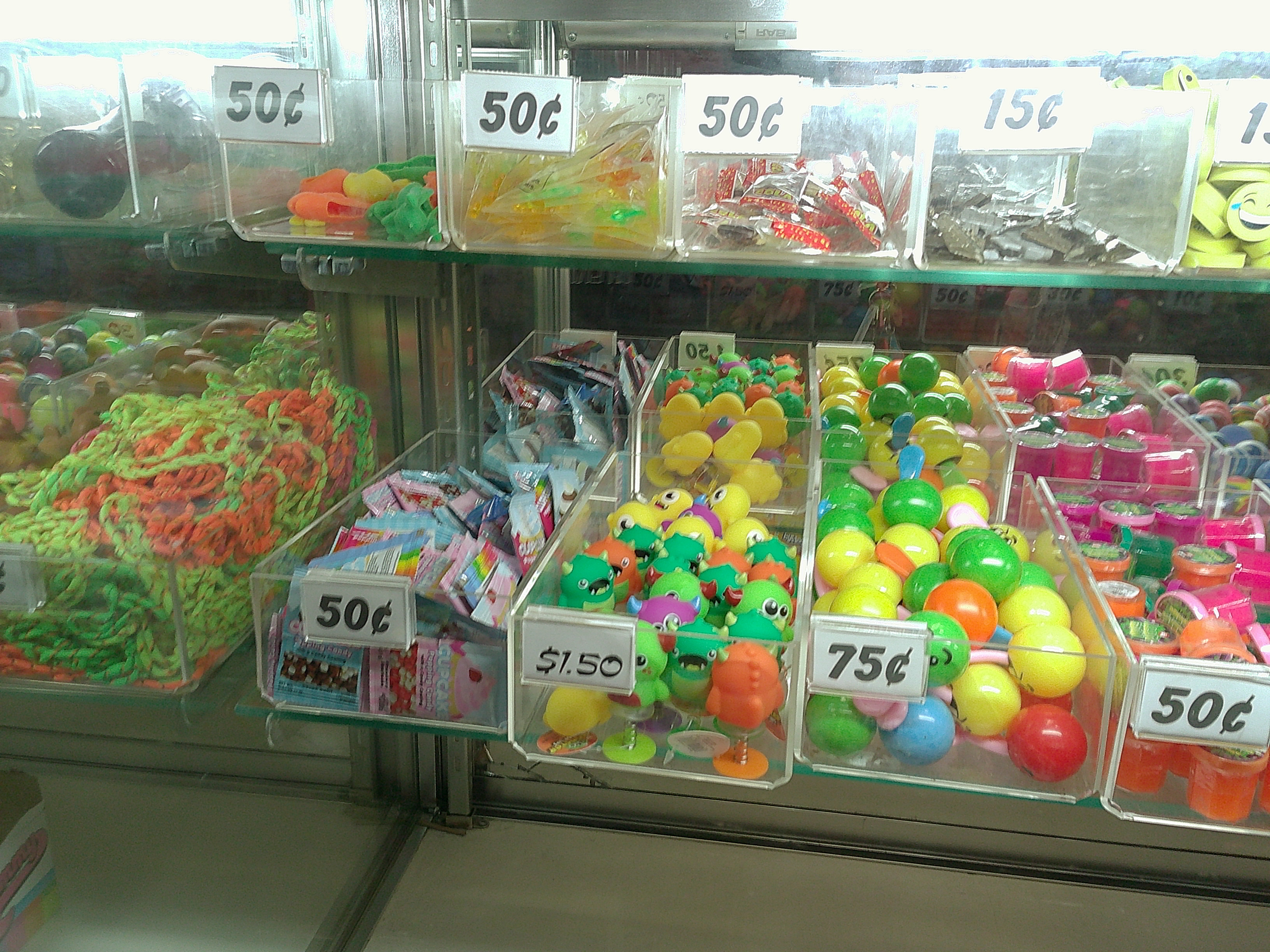
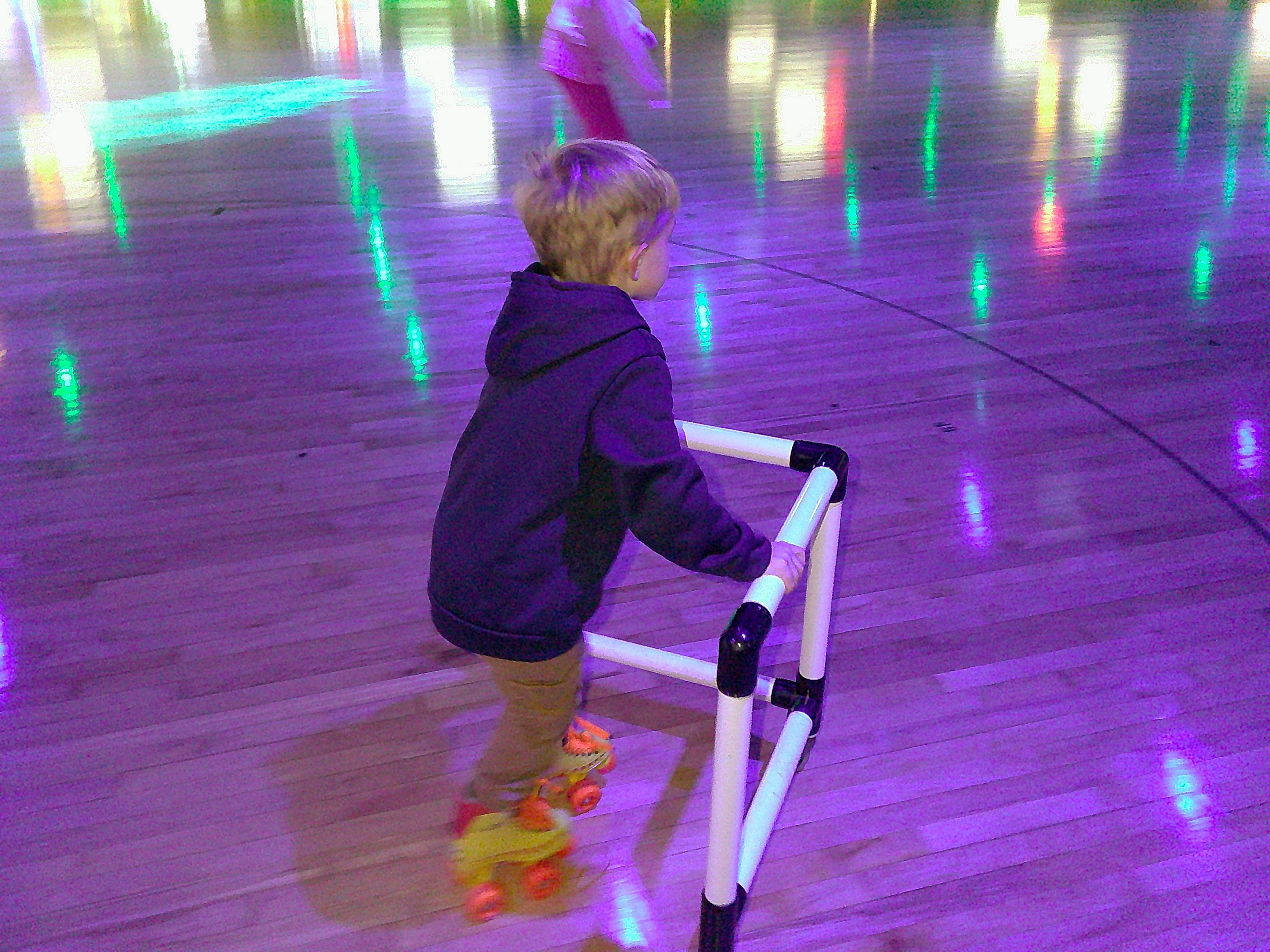
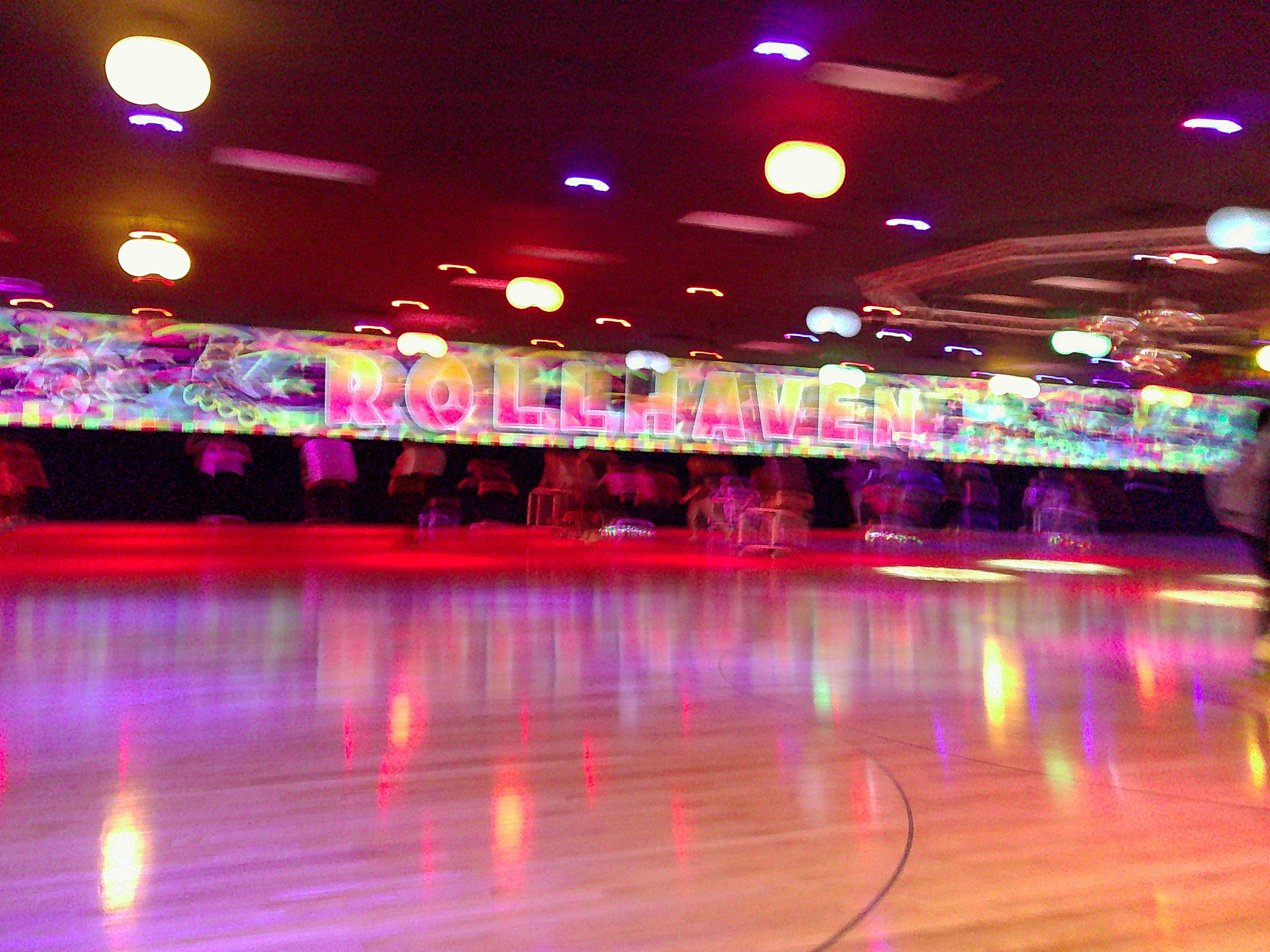
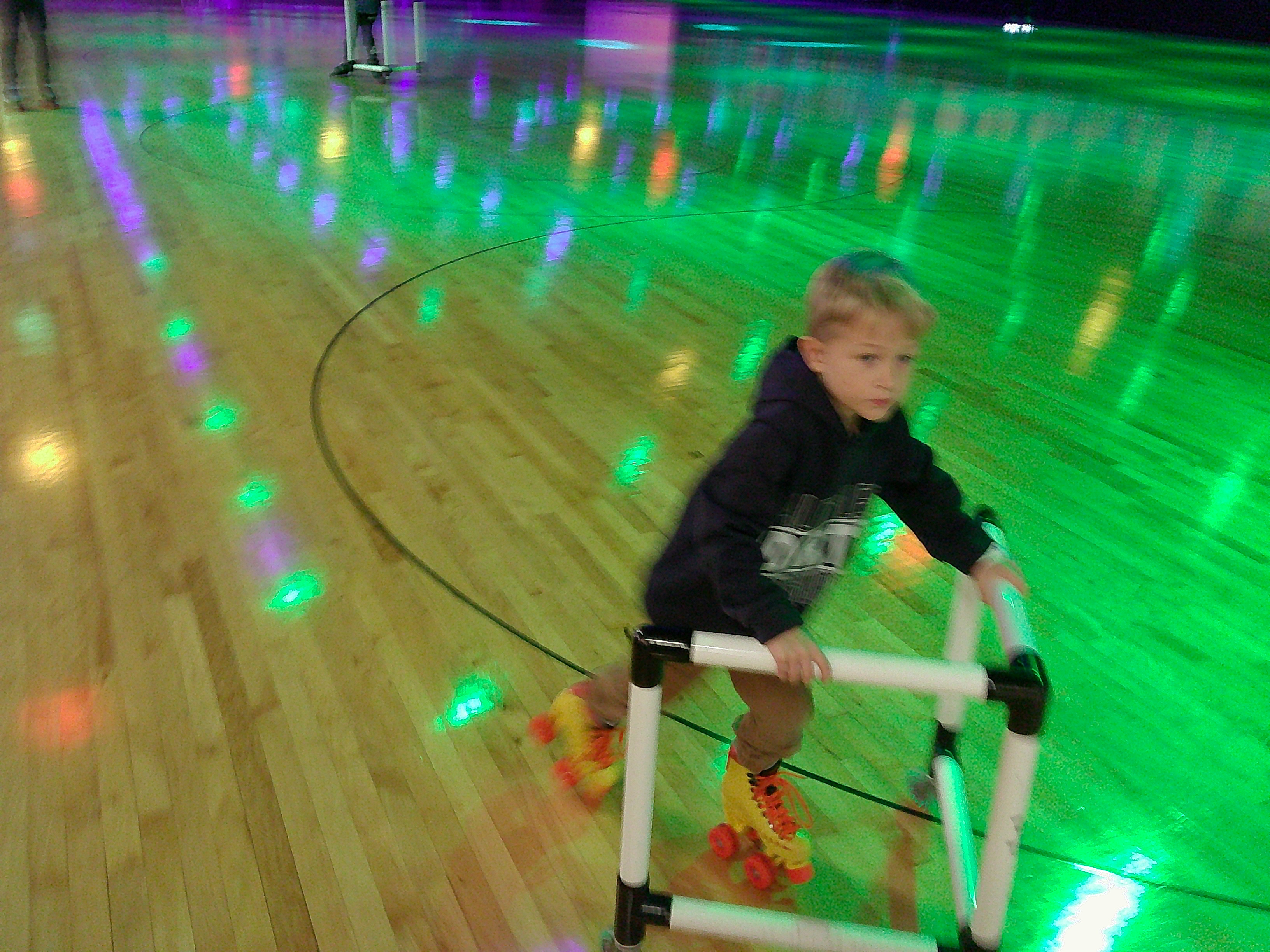
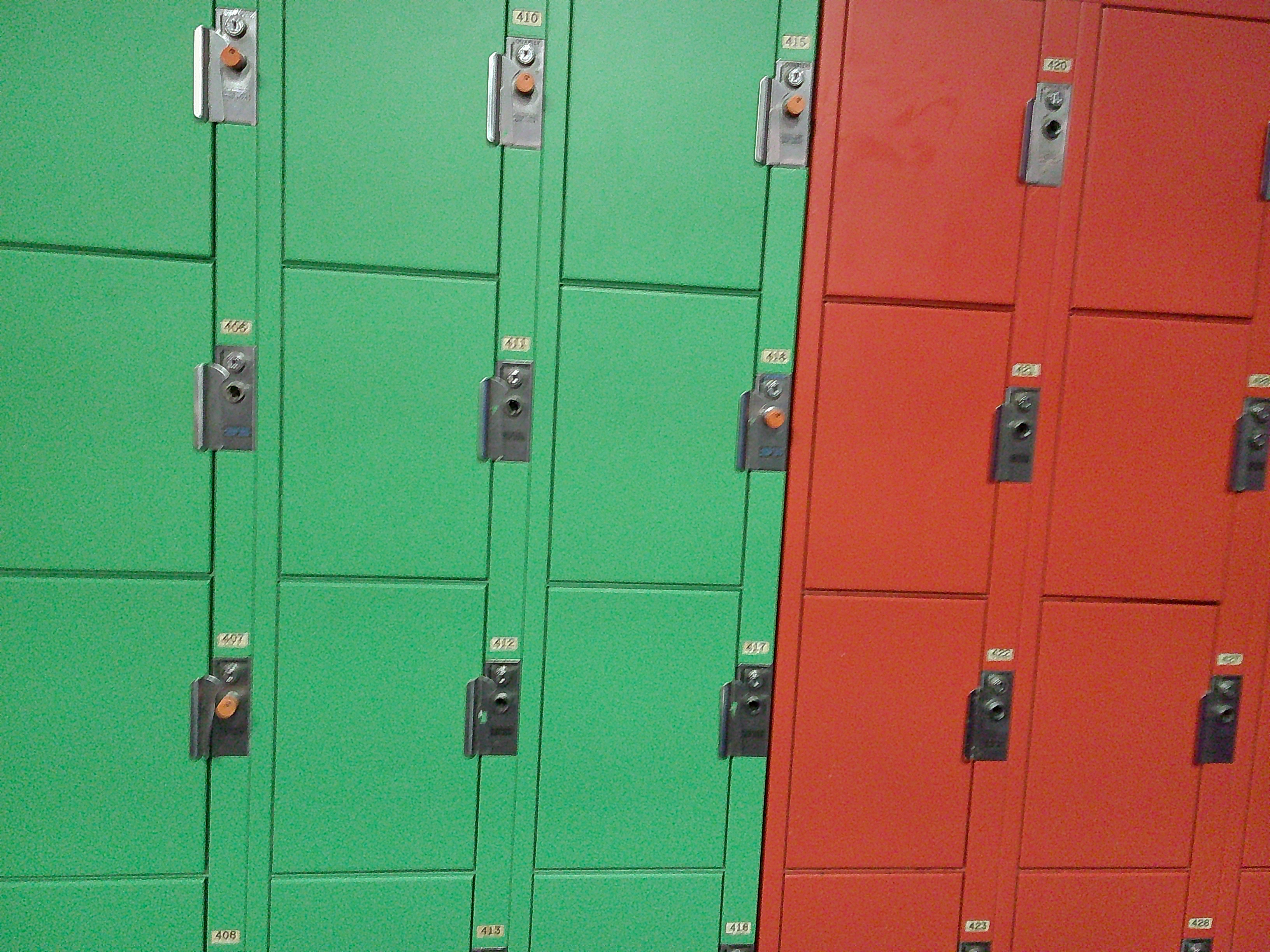
The automatic mode on the flash tends to error on the side of not firing, which means I did end up with some blurry photos even when a 35-year-old was manning the controls and not a 5-year-old. The built-in flash helps fight that blur and gives off that paparazzi flash look, so indoors it’s often best to switch the flash to on rather than auto, if you don’t want blur.
Sometimes, even flash photos turned out blurred, so the flash isn’t going to fix all potential blur. This was true for both shots by my five-year-old and my poor attempts to snap a selfie with the Camp Snap.
The other aspect that makes capturing a “perfect” frame with the Camp Snap difficult is the viewfinder. I think the viewfinder is wider than what the lens sees, which means you may have objects on the edge of your photo that you didn’t see in the viewfinder. For example, when I took this photo of tiny roller skates, the only thing in the viewfinder was the skates and retro carpet. Imagine my surprise when I realized I caught the edge of my own skates in the photo.
Of course, imperfection is integral to the definition of a retro photograph. If you want perfect images, then you don’t want a retro camera. The images I have of my 90s childhood are filled with my parent’s fingertips on the edge of the photo, red-eye flash, blinks and awkward moments as well as true film colors. The quirks on the Camp Snap remind me a bit of those photos, including catching the edge of my mittens in a few shots.
The 8MP sensor and plastic lens on the Camp Snap aren’t going to impress any pixel peepers – but they will impress someone looking for images with retro charm. I took the Camp Snap to the most 90s place I could think of – the roller rink – and I loved the way the plastic lens rendered the neon lights, giving them a bit of a glow. Yes, this would be a negative in a review of a modern mirrorless lens, but this is a cheap retro camera.
The Camp Snap’s color profile also favors more vintage tones – though you can customize the colors on a computer. The photos I snapped in the snow after loading the vintage color profile onto the camera leaned towards more muted tones and almost had a light sepia look to the whites.
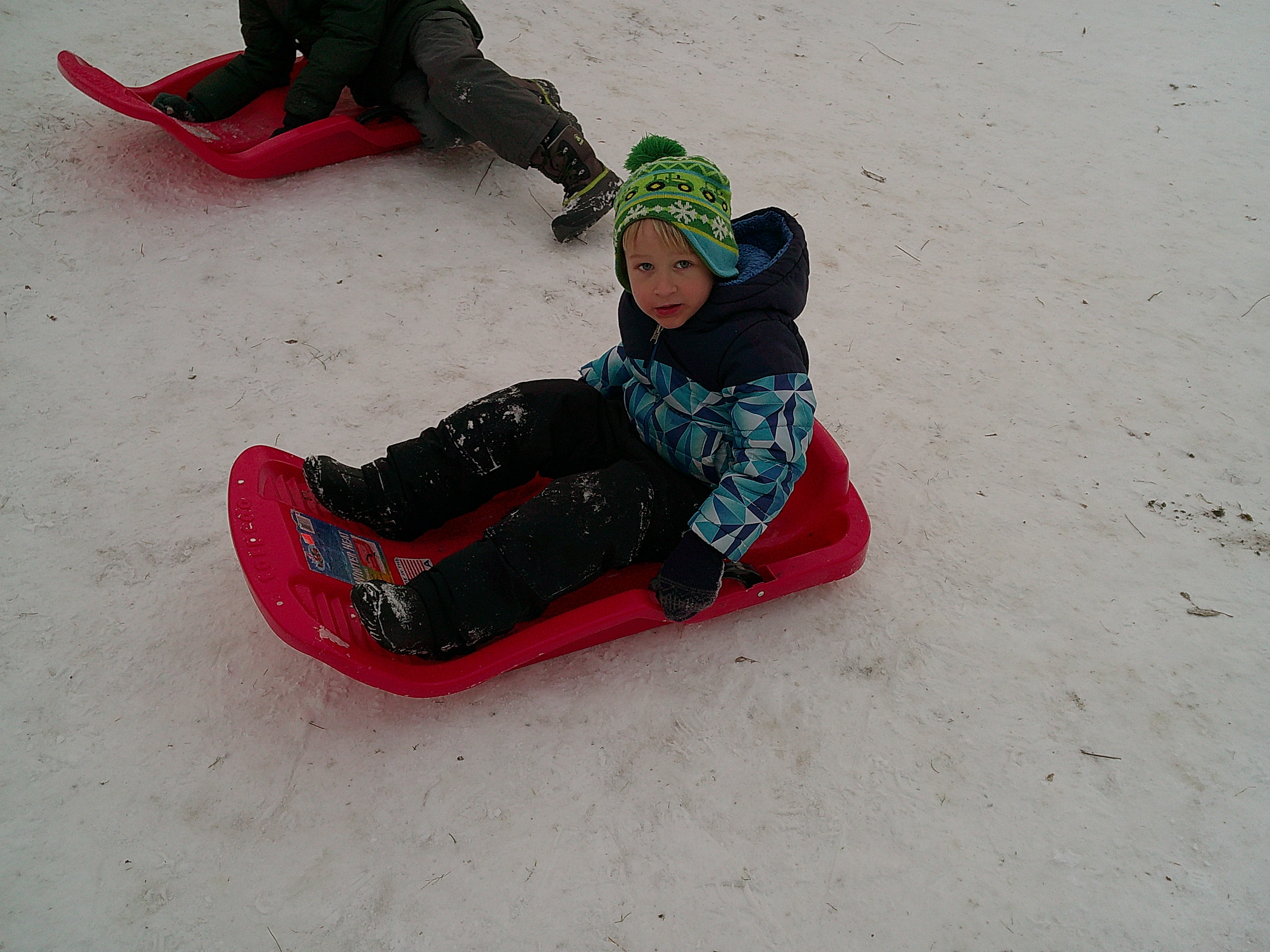


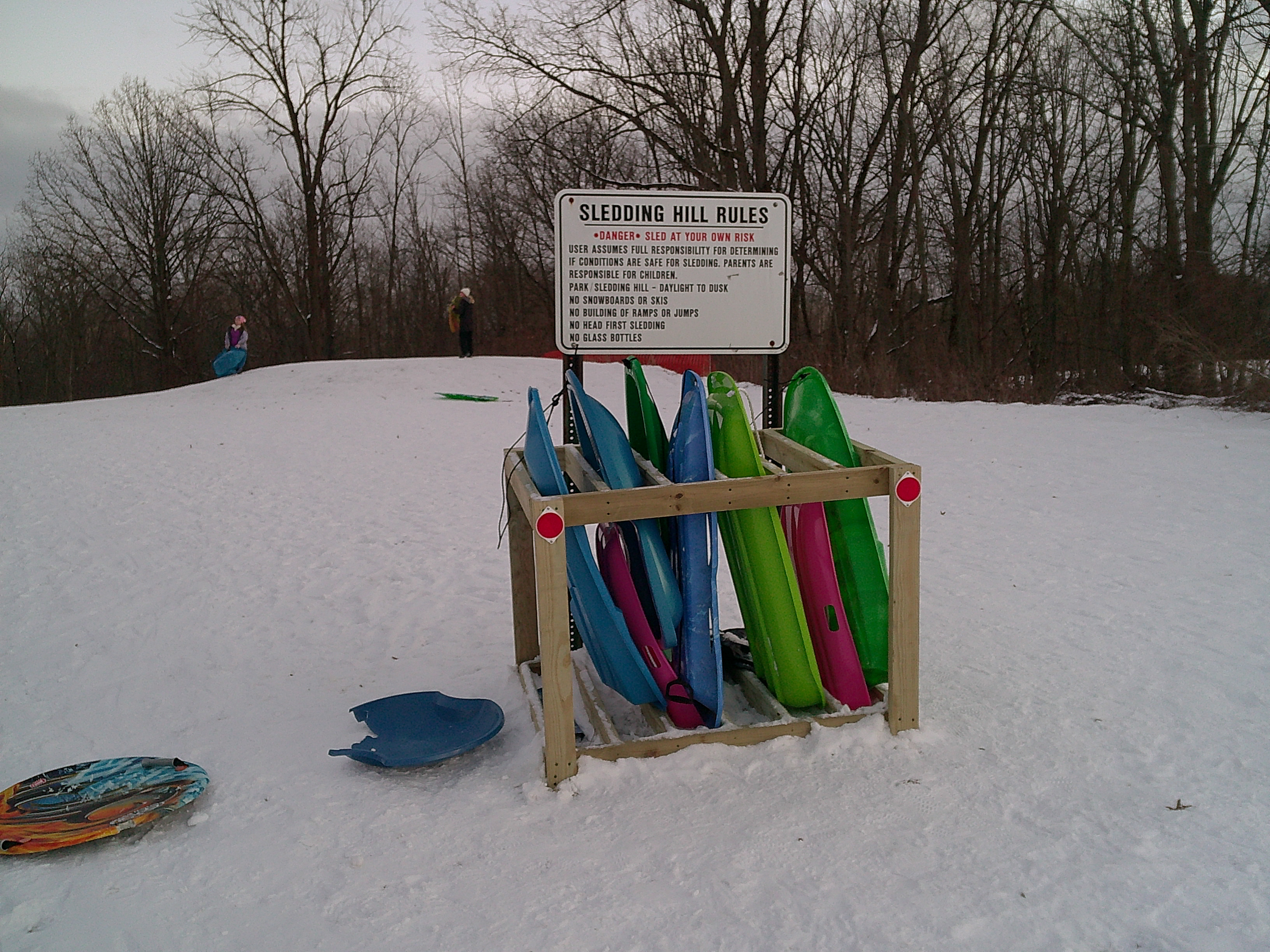
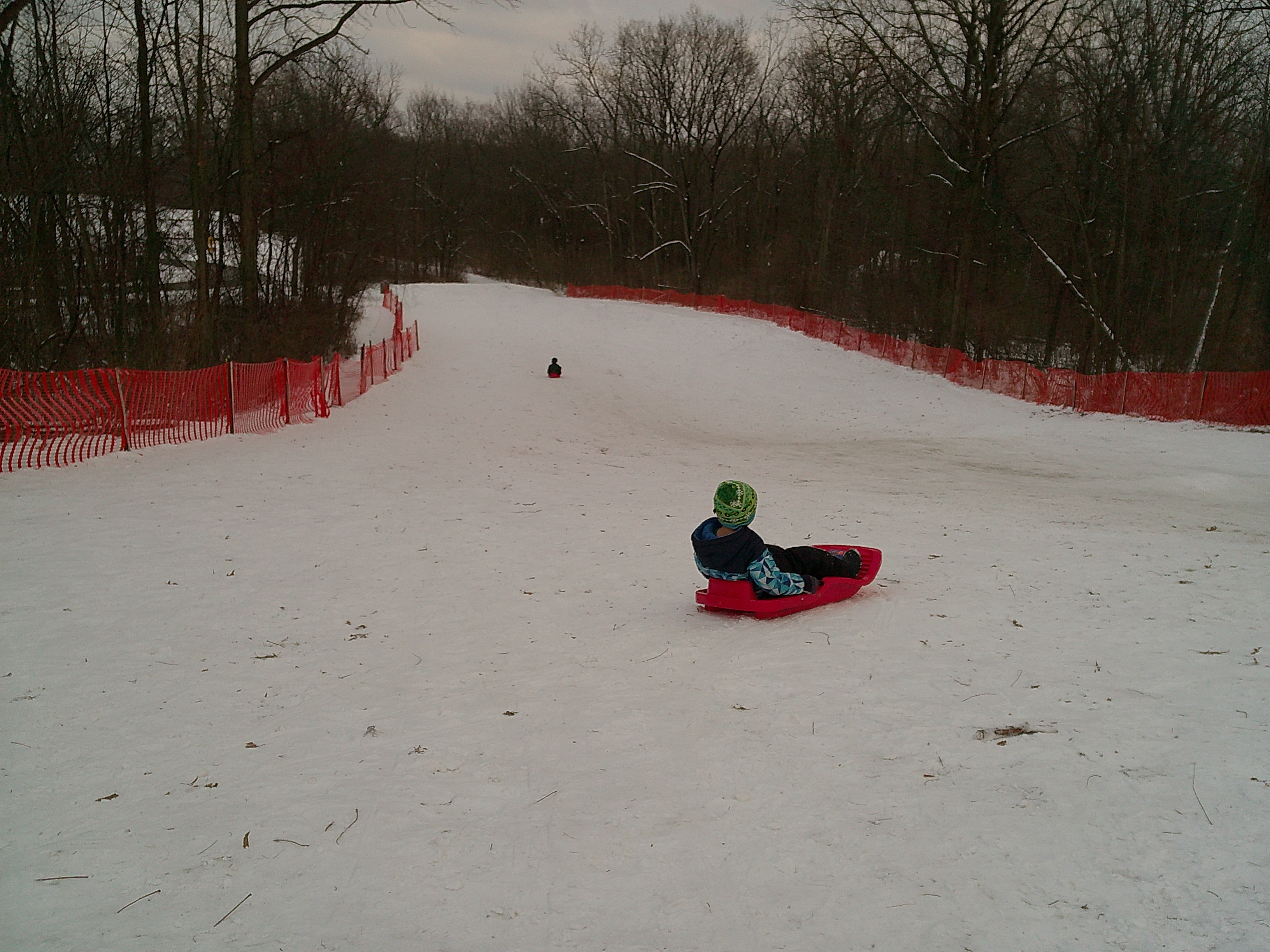
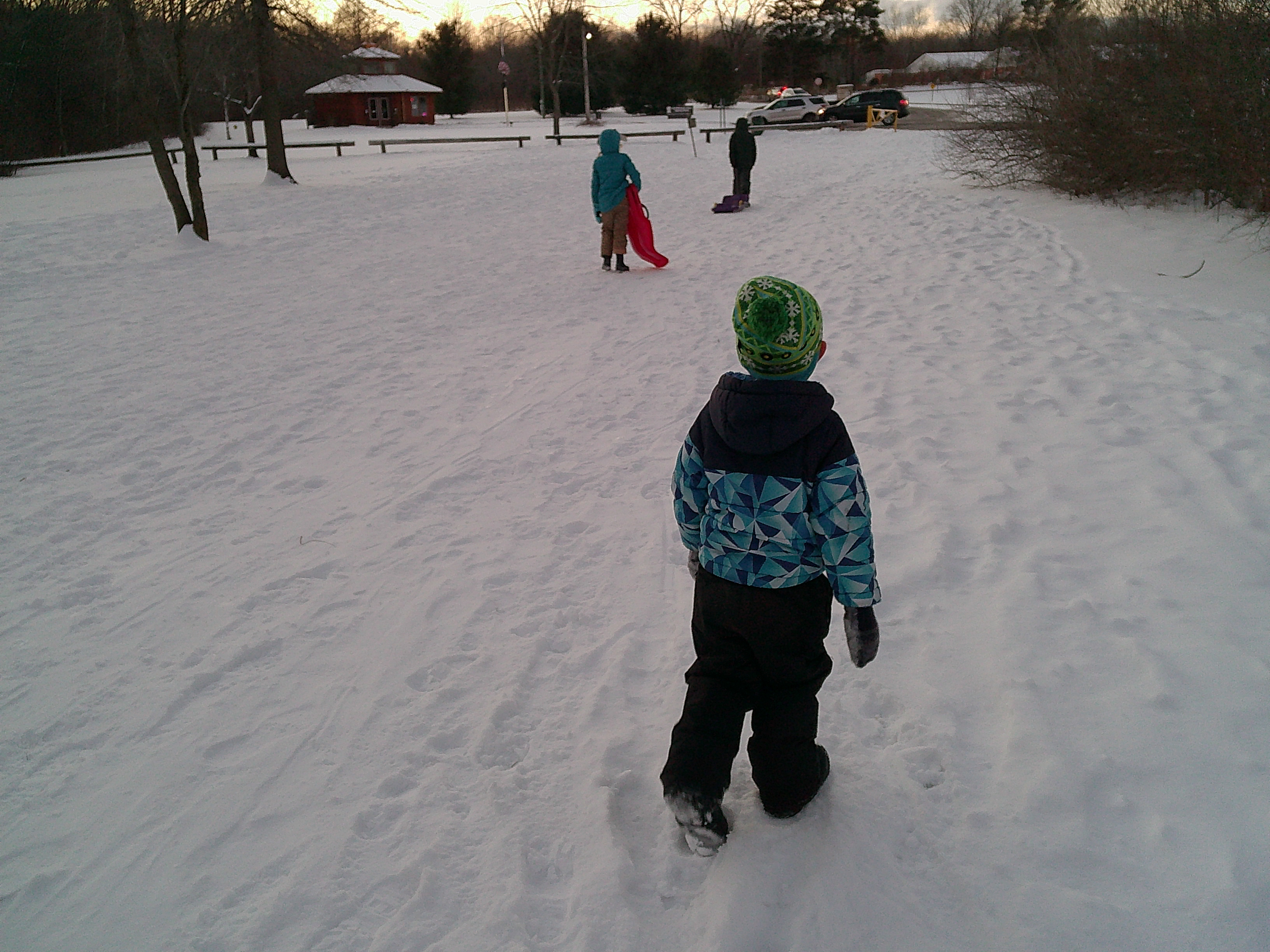
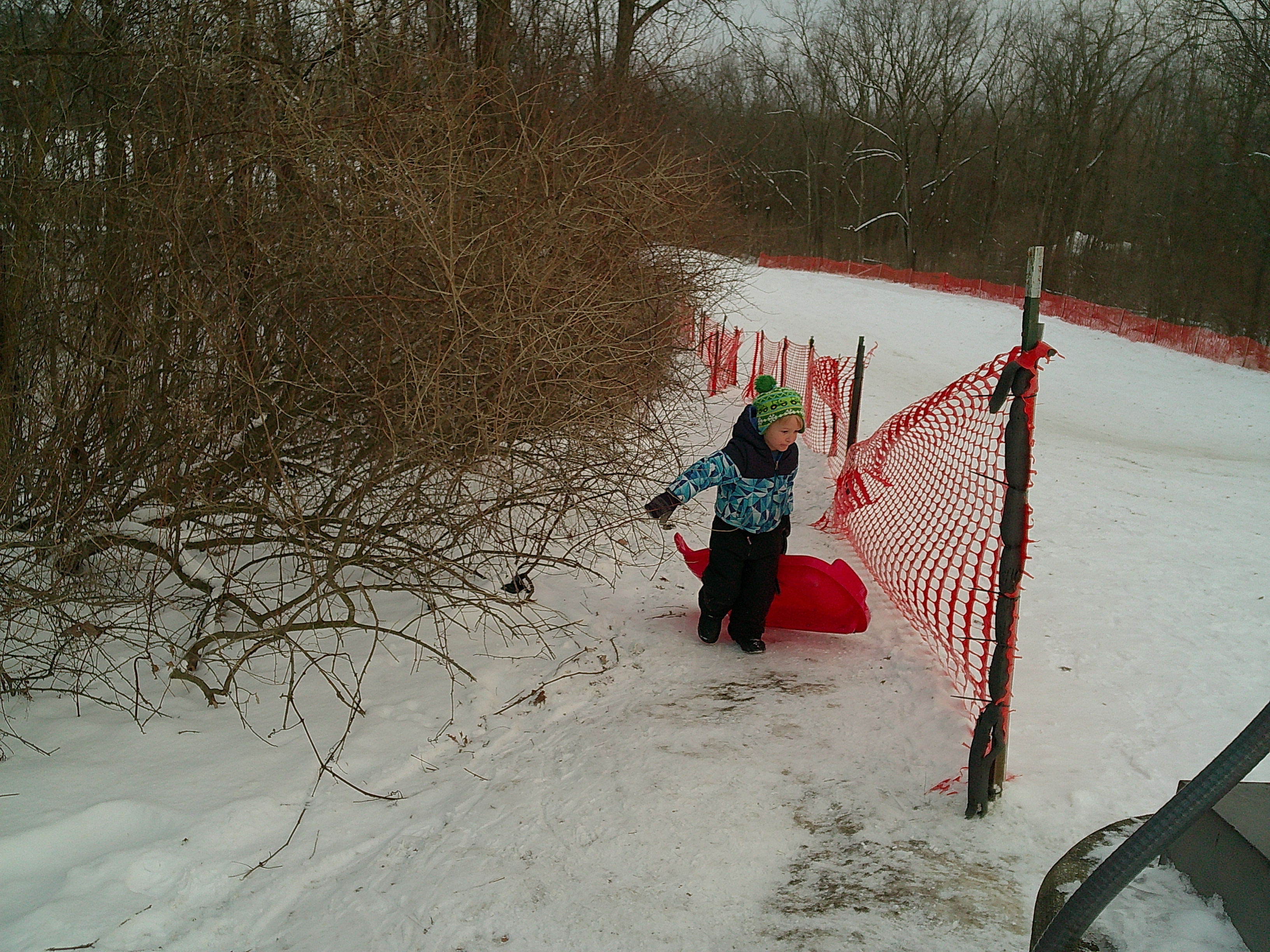
Like buying a crappy compact from the early 2000s off eBay, you probably shouldn’t zoom in on the images from the Camp Snap. The images have some noticeable grain, even those taken outdoors in good lighting. That’s to be expected from a cheap camera with a 1/3.2 inch sensor.
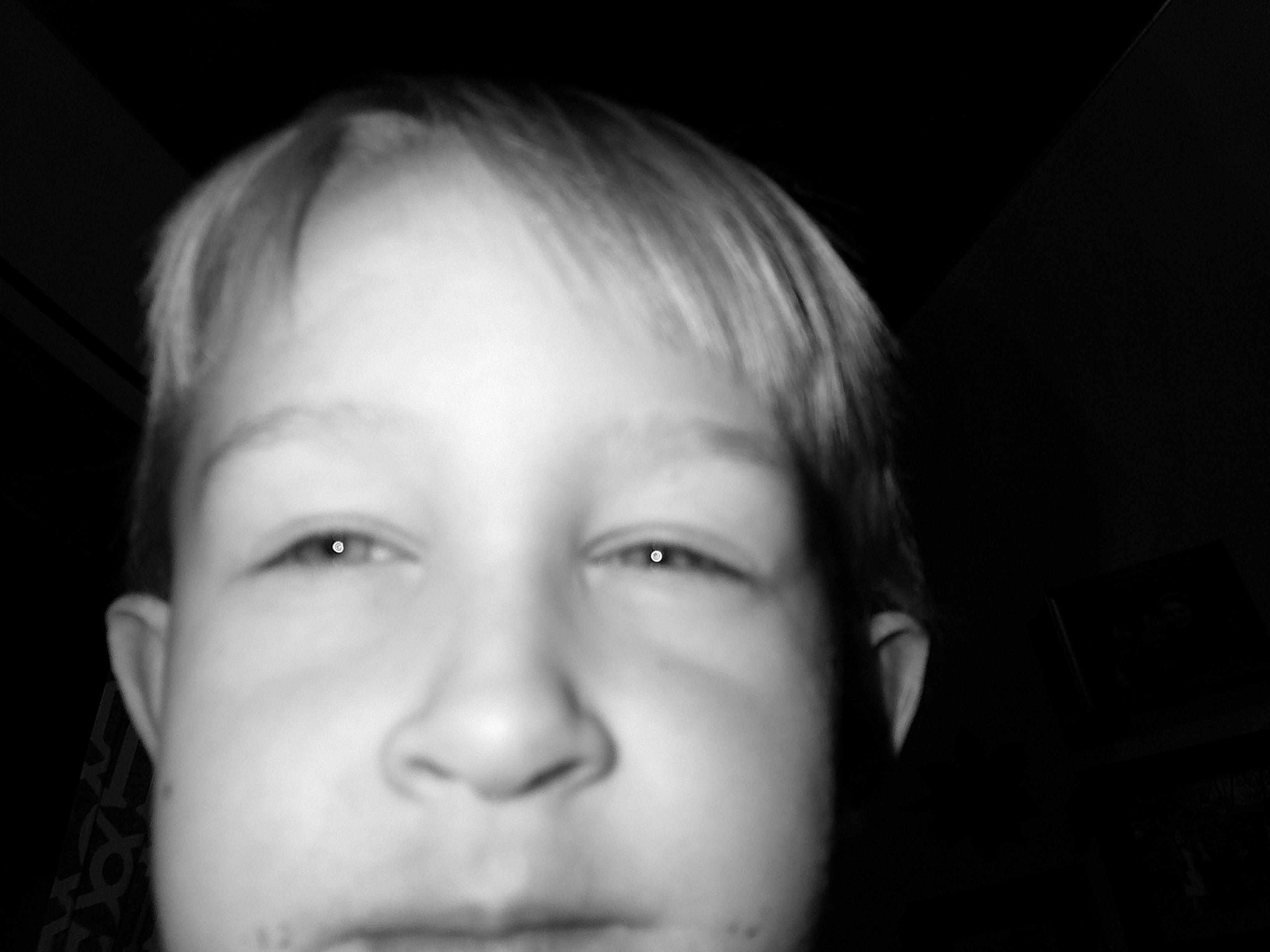
The Camp Snap uses a fixed focus lens, which means you don’t have to wait for the camera to lock focus. But, that also means the camera isn’t very good at close-up photos. Besides getting washed out from the flash, close shots will end up out of focus.
Whether or not those flaws – the fixed focus, imperfect viewfinder, plastic lens, and grainy images – are called flaws or quirks is all in the eye of the beholder, however. Considering the Camp Snap is a $65 / £65 / AU$107 retro camera, I feel more inclined to call them quirks. The images I captured reminded me of my 90s childhood. That, and the screen-free shooting experience I think will draw not just kids but nostalgic adults.
Camp Snap: Verdict
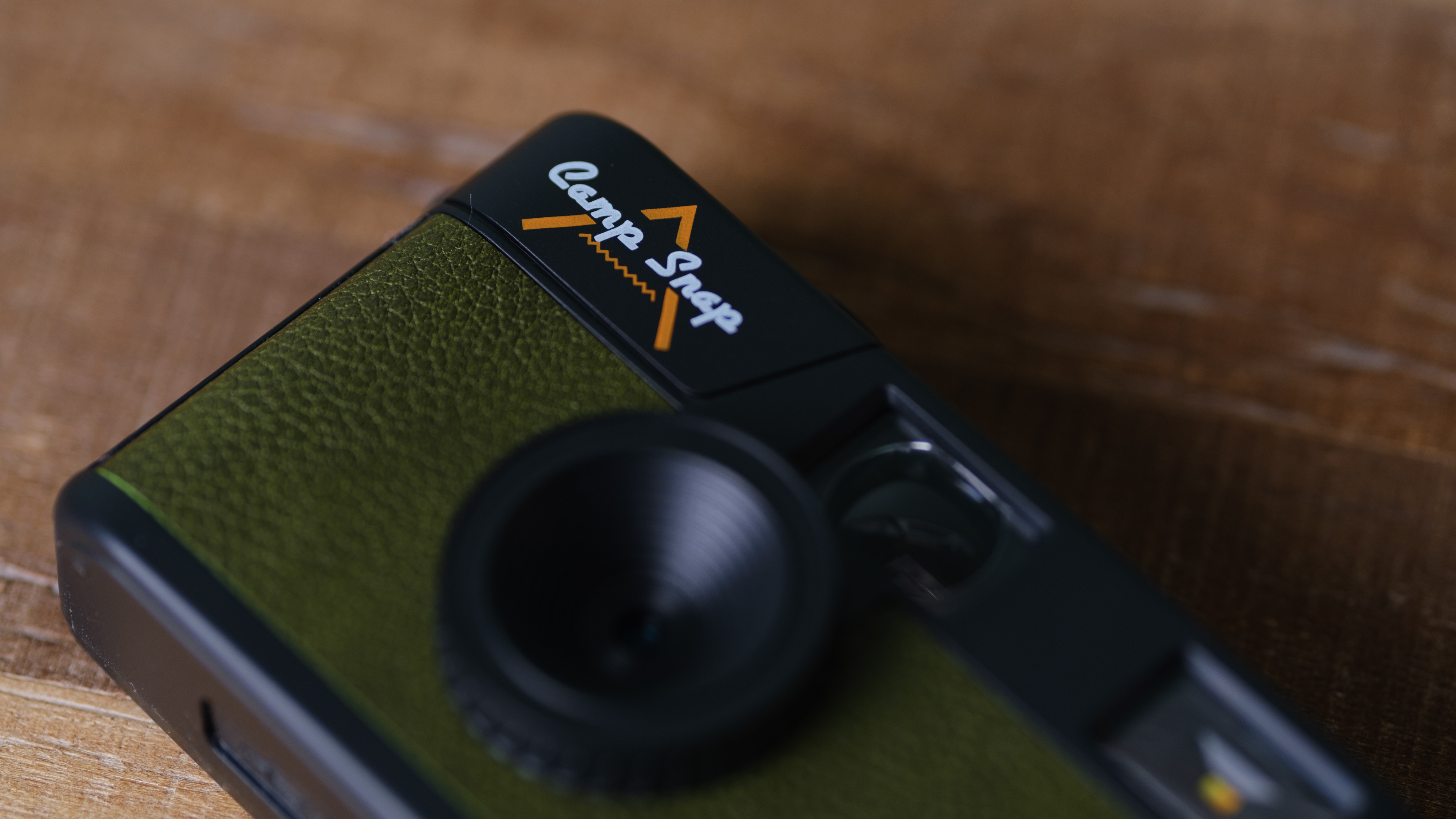
The Camp Snap is a screen-free compact camera that feels a bit like a 90s camera time-traveled into the digital age. Uniquely, I had fun snapping images that reminded me of my childhood, all while photographing my kids without getting distracted by a screen. At the same time, my kids also loved using the camera. That’s pretty unique for a cheap camera to impress both kids and adults.
But depending on who is holding it, the Camp Snap is either full of retro quirks, or irritating flaws. I loved the retro quirks, only finding the shutter lag and slightly inaccurate viewfinder to be minor annoyances that wouldn’t keep me from buying the camera, especially given its low price point. Others may be more miffed – and it's definitely not the camera for pixel peepers.
After using the Camp Snap, I can see two types of people who will love the camera. The first is kids (and the parents of said kids) for the camera’s simplicity and screen-free design. The second group are the same type of people buying up crappy old compact cameras because they want the retro look without the distraction of smartphone photography. The Camp Snap’s experience feels like a disposable point-and-shoot, but without the waste and developing costs. The shutter lag and 8MP images won’t please the most demanding of users – but then again, what $65 / £65 / AU$107 camera would?
| Features | There's not much that you can adjust with the Camp Snap besides the flash mode, but that does mean its incredibly easy to use. | ★★★★☆ |
| Design | The Camp Snap feels like a disposable film camera, although the screen-free retro charm may not be for everyone. | ★★★★☆ |
| Performance | There's an annoying shutter lag with the Camp Snap. That said, the images are charming if you want simple and retro. | ★★★☆☆ |
| Value | Name another camera that you can buy new this cheap. Go ahead, I'll wait. | ★★★★★ |
Alternatives
The Camp Snap is a rather unique mix of a retro design with modern digital technology at an affordable price point, but it’s not the only affordable retro compact camera. Photographers whose interest is piqued by the Camp Snap may also want to consider options like the Flashback One35, or the Instax Mini Evo.
The Flashback One35 is a digital camera that looks and feels like a disposable film camera. The biggest difference compared to the Camp Snap is that the Flashback has a smartphone app and your images are automatically sent there after a 24 hour “developing” period. That may be appealing for those who despise the idea of plugging the Camp Snap into a computer or smartphone to retrieve the images, but it comes at a higher price point.
The Instax Mini Evo is a different sort of film-digital hybrid. The Evo is a digital camera, but you can print out its photos on instant film directly from the camera. The Evo also sports a lovely retro design and far more creative tools than the Camp Snap, though, with a screen, it has less of those unpredictable but endearing quirks.
You may also like
For more inspiration browse our top picks for the best cameras for kids, the best retro cameras, or the best compact cameras.

With more than a decade of experience writing about cameras and technology, Hillary K. Grigonis leads the US coverage for Digital Camera World. Her work has appeared in Business Insider, Digital Trends, Pocket-lint, Rangefinder, The Phoblographer, and more. Her wedding and portrait photography favors a journalistic style. She’s a former Nikon shooter and a current Fujifilm user, but has tested a wide range of cameras and lenses across multiple brands. Hillary is also a licensed drone pilot.
